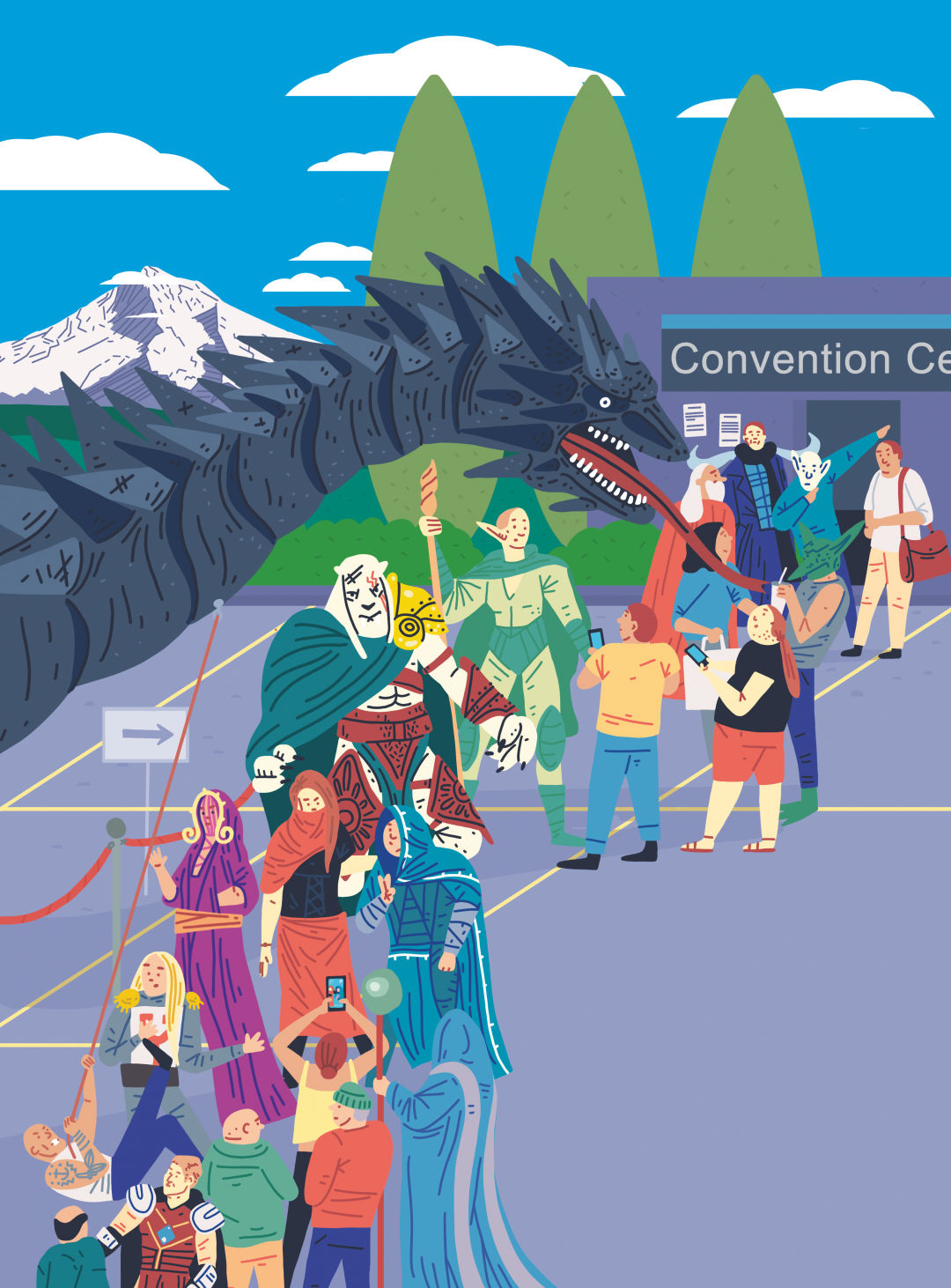Magic: The Gathering Players Take Over the Oregon Convention Center

Image: Thomas Howes
Your opponent is at three life, but you’re dead on the swing back. Your puny goblins are no match for their battlefield of massive zombie fish and legendary human shamans and wizards. The next card you draw will determine your fate.
You flip up the top card of your deck: Lighting Bolt. “Deal 3 damage to target creature or player.” Victory.
This is Magic: The Gathering. You may remember it as that way-too-complicated game your older brother tried teaching you once in the ’90s. But it hasn’t faded away with time. It’s bigger than ever.
Indeed, on December 7, more than 2,000 amateur to professional (yes, that’s a thing) players are expected to gather at the Oregon Convention Center for one of the game’s many yearly Grand Prix events held around the globe to compete for a top prize of $10,000. Placing in the top eight also wins you a seat at the Pro Tour—Magic’s second-highest-level tournament (after the world championship). And it’s not only nerdy teenage boys: women make up an estimated 38 percent of Magic players overall.
“Magic is actually a pretty great scene for inclusivity,” says local player Steven Son, who spends some 30 hours a week of playtime prepping in the months leading up to a Grand Prix. “There are a lot of people with different backgrounds playing. It’s not just straight white dudes.”
Created in 1993 by Richard Garfield, the game itself is frequently described as a combination of chess and poker ... but with dragons, mages, and elves substituting for rooks and hearts. Its core mechanics set the framework for many other card games, including wildly popular Hearthstone and Pokémon. And like Pokémon, individual Magic cards are traded and sold extensively, sometimes for tens of thousands of dollars. The Black Lotus, one of Magic’s rarest and most powerful cards, recently sold on eBay for more than $87,000.
Worldwide, there are more than 20 million players, about 65,000 of whom play in high-level events like this. The game makes up a good chunk of the close to $1.5 billion total gaming revenue for Hasbro, which acquired Magic’s Renton, Washington–based publisher, Wizards of the Coast, in 1999. In Portland, 2017’s Grand Prix drew more than 1,600 registered players for the main event, plus the many fans who came to get their cards signed at artists’ booths, play in side events, or just to watch their favorite players battle it out.
Gene Joo, who has run countless tournaments and worked at Southeast’s Guardian Games for the past six years, has seen Portland’s Magic community grow and evolve, a parallel to our exploding board game scene. “Portland is very open-minded and accepting,” he says. “Growing up ... playing Magic was looked down on. Now, you’re cool if you play Magic. You’re smart if you play Magic.”
How did a once scoffed-at pastime become the most popular trading card game in the world? Marshall Sutcliffe, a tournament commentator and host of the popular Magic podcast Limited Resources, has also witnessed the game’s explosion firsthand, seeing massive growth in attendance at events and in listeners of his show. He says he was shocked when an episode topped 280,000 downloads. Sutcliffe attributes growth to a number of different factors—from a string of particularly fun card sets to conscious efforts from Wizards of the Coast to make the game more accessible to new players.
Plus, adds Sutcliffe: “It’s probably the best game ever made.”




